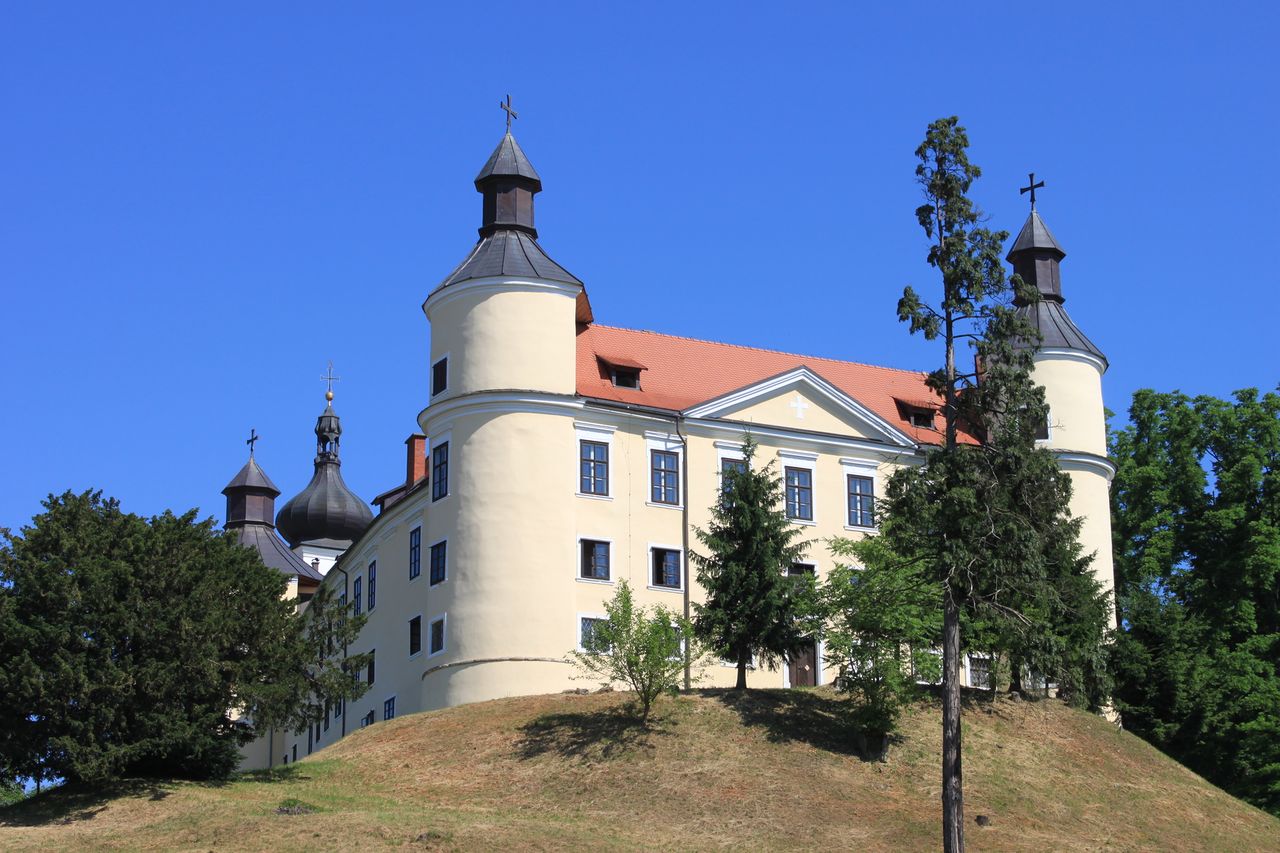 An opening ceremony of the Izgnanci exhibition at the National Museum of Contemporary History, Brestanica Unit at Rajhenburg Castle, 2014
An opening ceremony of the Izgnanci exhibition at the National Museum of Contemporary History, Brestanica Unit at Rajhenburg Castle, 2014
The Brestanica Unit of the National Museum of Contemporary History is housed at Rajhenburg Castle in Brestanica, one of the oldest medieval castles in Slovenia. The permanent exhibitions, however, are dedicated to the (mis)usage of the castle premises in the modern times. From 1884 till 1941 it was occupied by the contemplative Trappist Order, which brought progress to the Posavje region. They were expelled by the Nazis who converted the castle into a camp for deporting Slovenes. During the course of World War II around 45,000 Slovenes were sent into exile from here. After World War II the castle continued to function as a prison, but in 1968 it was converted into a museum. Currently it features a re-staged permanent exhibition on the Trappists from Rajhenburg. A new permanent exhibition dedicated to the internment and political prisoners was opened in 2014.
NOT ROBOT, WRITING DONE, INFOBOX DONE, PROOFREAD DONE, FERTIK, NOVERIFY, NODEPO, PHOTO, FEATURED, Article, NO LOGO, Museums, Articles maintained by Admin, World War II

 Velika Nedelja Castle, view to the north-west, 2014.
Velika Nedelja Castle, view to the north-west, 2014.
According to legend, the town and castle of Velika Nedelja ("Easter Sunday") were named after an important battle on Easter Day in 1199 when Friderik of Ptuj supposedly snatched the still-unpopulated land in this area from the Hungarians. He later granted it to the Teutonic Order of Knights, who built the first castle. Much of the present Velika Nedelja Castle dates from a 16th-century reconstruction and today it houses the Velika Nedelja Unit of the Ptuj – Ormož Regional Museum, established in the 1980s. An ethnological collection of the Ormož region is on display.
NOT ROBOT, WRITING DONE, INFOBOX DONE, PROOFREAD DONE, FERTIK, NOVERIFY, NODEPO, PHOTO, FEATURED, Article, NO LOGO, Articles maintained by Janez Premk, Museums, Monuments and sites, Castles, Ethnographic museums and collections






